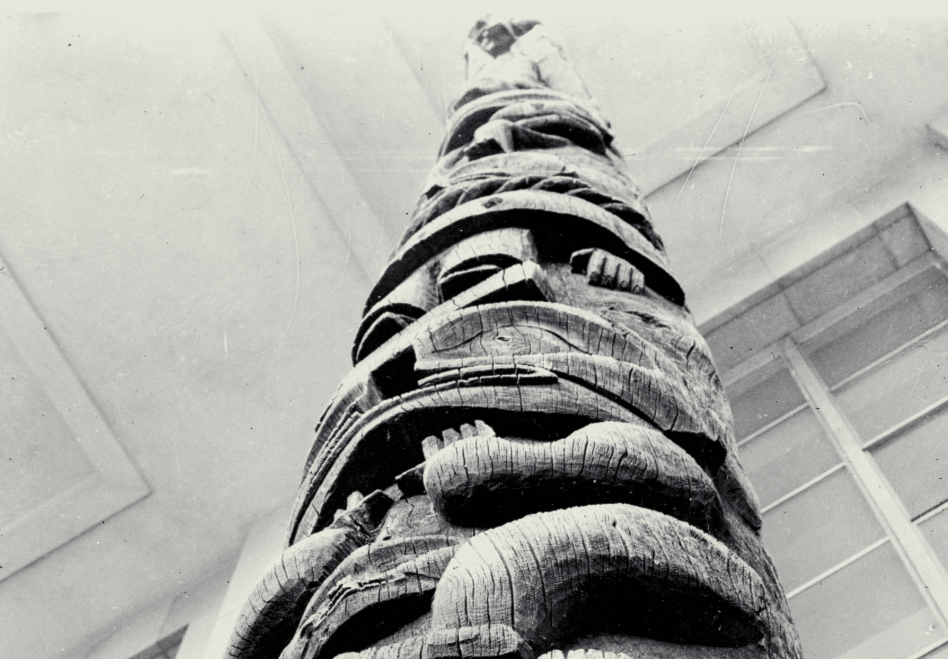A group of Witsuwit’en hereditary chiefs, elders, artists, and youth will visit Paris this month to view a historic totem pole taken from their territory nearly a century ago. The K’ëgit pole was sold under pressure in the late 1930s, and has since been housed at the Quai Branly – Jacques Chirac Museum since 2001.
“It’s quite emotional when I think about our people,” said Hagwilnekhlh Ron Mitchell, current House Chief of the C’inegh Lhay Yikh (House of Many Eyes) of the Likhsilyu Clan (Small Frog). “I will be happy to see the totem pole and a part of our house and chief’s history, but sad at the same time.”
In 1938, surrealist artist Kurt Seligmann travelled to B.C. to purchase a totem pole, driven by his fascination with Northwest Coast Indigenous art. After consulting with anthropologist Marius Barbeau, who had studied the region’s totem poles, Seligmann selected the K’ëgit pole from the Witsuwit’en village of Tsë Cakh (Hagwilget). The pole, revered for its age and craftsmanship, depicts the story of K’ëgit, a supernatural figure. It was originally raised in the early to mid-1800s by C’idimsggin’ïs, a former house chief of C’inegh Lhay Yikh.
The delegation asserts that the pole was sold under duress. With backing from the Department of Indian Affairs and the local Indian Agent, Seligmann purchased the pole from Likhsilyu House Chief Hagwilnekhlh Arthur Michell and other Witsuwit’en members for a mere $100. The community leaders were pressured into agreeing to the sale, which resulted in the pole being shipped to Paris. It was displayed at the Musée de l’homme (Museum of Man) before being moved to the Quai Branly Museum.
SD54 District Principal of Indigenous Education ’Ilhdesinon Birdy Markert, a descendant of the pole’s original sellers, views the visit as a step toward healing. “It’s an emotional uncovering of past stories regarding our traditions that are difficult to pull apart,” she said. “I want young people to understand what our ancestors went through as they dealt with colonization and how hard they fought to keep our culture and traditions alive.”
No decision has been made regarding the pole's rematriation. As this is their first visit, the group said it's too early to determine the outcome. Other options may include carving a replica or creating a cultural exchange.
Master Carver Dzïggot Ron Austin, who is part of the delegation, is eager to see the pole from an artistic standpoint: “It’s an amazing opportunity to see the pole that may have belonged to my grandmother’s older brother. It means a lot as an artist to see what my ancestors created before me in person.”
The delegation hopes the journey will help restore and strengthen the Witsuwit’en’s cultural ties to the K’ëgit pole, contributing to ongoing revitalization efforts for their community.
"Our stories shared on ts’an (totem poles) are such an integral part of our identity," delegation member Ts’akë ze’ West’es Sandra Martin Harris said. "To visit this pole and connect with the history it holds is both painful and healing."



